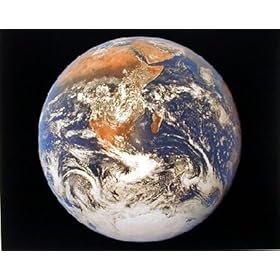
Okay, maybe you saw this news item and maybe you didn’t — if not I’m going to talk about it for a bit. It seems that scientists have noted that there seems to be some rather large methane plumes on Mars. NASA released this information in one of their news release/feature report along with some media photos and animations.
Why is this so important a discovery? I’m so glad you asked.
Methane is usually an indication of life. You may have heard that the problem with cattle is that they create manure and thus methane gas. However, as the US EPA report on sources of methane there are a lot of other sources for methane gas. It can be created by either geologic or biologic mechanisms and the same thing applies in the case of the methane on Mars.
For many years, Mars has been considered to be a dead planet. In science fiction stories it has always been a source of possible life, sharing this solar system with us. However, no evidence of a civilization has been found in spite of all the rumors of canals and canal building since the earliest studies of Mars with telescopes as they were developed and perfected. But, things have changed as we’ve sent landers to Mars and studied the landscape much more closely. There is evidence that there may once have been water on Mars and there may be water there still. Water is a key element in developing life — at least as far as we know from our own experiences and studies on Earth.
Now NASA has found methane:
New research reveals there is hope for Mars yet. The first definitive detection of methane in the atmosphere of Mars indicates the planet is still alive, in either a biologic or geologic sense, according to a team of NASA and university scientists.
“Methane is quickly destroyed in the Martian atmosphere in a variety of ways, so our discovery of substantial plumes of methane in the northern hemisphere of Mars in 2003 indicates some ongoing process is releasing the gas,” said Dr. Michael Mumma of NASA’s Goddard Space Flight Center in Greenbelt, Md. “At northern mid-summer, methane is released at a rate comparable to that of the massive hydrocarbon seep at Coal Oil Point in Santa Barbara, Calif.”
However, we can’t get too excited about finding life on Mars, even in such a basic form as a biological process that could produce methane gas because the gas can also be produced via geologic processes:
“Microbes that produced methane from hydrogen and carbon dioxide were one of the earliest forms of life on Earth,” noted Dr. Carl Pilcher, Director of the NASA Astrobiology Institute which partially supported the research. “If life ever existed on Mars, it’s reasonable to think that its metabolism might have involved making methane from Martian atmospheric carbon dioxide.”
However, it is possible a geologic process produced the Martian methane, either now or eons ago. On Earth, the conversion of iron oxide (rust) into the serpentine group of minerals creates methane, and on Mars this process could proceed using water, carbon dioxide, and the planet’s internal heat. Although we don’t have evidence on Mars of active volcanoes today, ancient methane trapped in ice “cages” called clathrates might now be released.
These scientists (Dr. Geronimo Villanueva of the Catholic University of America, Washington, D.C. and others) found the methane plumes using observatories here on Earth at NASA’s Infrared Telescope Facility, run by the University of Hawaii, and the W.M. Keck telescope, both at Mauna Kea, Hawaii. Further research needs to be done because while their findings are definitely exciting, they need to be matched with observations made on Mars to help identify the origins of these plumes and what makes them.
Personally, it doesn’t really matter whether the methane plumes are a result of geologic or biologic mechanisms. If they are geologic they can be of use to future colonists or visitors to the planet as a source of possible energy during the early stages of establishing a research facility. If biologic then there maybe indigenous life on the planet — perhaps just low level cellular activity but still life — that also can be of use in broadening our understanding of how the universe works and our place in it.
The fact of the matter is that currently all our eggs are in this very fragile blue basket — Earth. The case is not if the Earth gets hit with a asteroid or a stray bit of whatever, it’s when we get hit. Depending on the size of a strike, we could be eliminated completely or starting all over with the basics — back to the stone age. For the survival of our species and for the survival of our society and culture and knowledge, we need to spread out throughout this solar system so no matter what happens to our planet, some of us will survive at a level that can in turn help us to recover what we’ve lost.
It’s beginning to look like Mars just might be a really good basket for us to look to when we’re looking for a place to put a few eggs. It’s the same sort of impulse for survival that caused the people of Vietnam during the war to send a son to each side so that no matter who won the war, there was a family member who could help the family to go on. The people of Earth are now reaching the stage where we are becoming capable of seeing that no matter what happens we should be capable of survival as a species if not as individuals. Space science has given us enormous technological leaps in medicine, physics, engineering, computers, and a basic understanding of how systems work in complex environments. It may not look like it, but it will also give us a chance to reach out to a new frontier — increasing the chance that humans will continue to grow and survive in this solar system.
But then that’s just my pie in the sky hope.
 Irreversible. That’s what a new study reported by NPR says:
Irreversible. That’s what a new study reported by NPR says:






